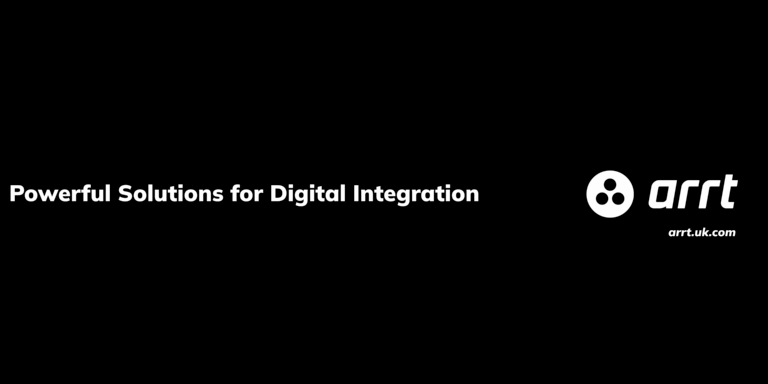Financial services organisations face some of the toughest pressures in cloud adoption. Customers expect fast, reliable, and personalised digital services. Regulators expect resilience, transparency, and full control of sensitive data. Executives expect lower costs and faster delivery. Meeting all of these demands at once is not easy.
Many firms move workloads into Microsoft Azure to modernise. Without a proper foundation, however, they quickly face compliance gaps, rising costs, and difficulties integrating new services. A Microsoft Azure Landing Zone offers a way to address these challenges. It embeds the controls required for compliance and resilience, while providing a consistent environment that accelerates integration and innovation.
This post explores the unique challenges of cloud adoption in financial services, what a landing zone provides to the sector, how it aligns with regulatory frameworks, and best practices for building a secure and future-ready platform.
Cloud Challenges in Financial Services
Financial services operate under stricter rules than most industries. They face oversight from regulators, data residency requirements, and obligations to maintain operational resilience. At the same time, competition from fintech and changing customer expectations push firms to deliver new services faster.
Common challenges include:
- Heavy regulatory oversight and frequent audits.
- The need to ensure data sovereignty and residency.
- Pressure to provide high availability and tested disaster recovery.
- Growing supply chain risk as more third parties are used.
- The requirement to apply strict access controls and segregation of duties.
Without a consistent foundation, these requirements slow every project. Each new service must solve the same compliance problems from scratch, wasting time and increasing risk.
What a Microsoft Azure Landing Zone Brings to Financial Services
A Microsoft Azure Landing Zone creates a baseline environment where controls are enforced automatically, integration is standardised, and evidence is collected by default. This reduces friction while improving security and compliance.
Policy and evidence by default. Policies enforce encryption, tagging, network restrictions, and data location. Compliance states are collected centrally, and reports can be generated automatically for auditors.
Identity and access discipline. Role-based access control limits permissions. Privileged Identity Management ensures that elevated access is temporary and approved. Multi-factor authentication and conditional access provide additional safeguards. Segregation of duties between developers, operators, and auditors reduces conflicts of interest.
Network security and isolation. Workloads are private by default. Connectivity uses private endpoints, managed DNS, and firewalls. Internet exposure is controlled, and outbound access is restricted to approved services.
Data protection. Encryption is enforced for data at rest and in transit. Customer-managed keys are used for sensitive data stores. Data classification policies apply retention and deletion rules.
Resilience and recovery. Backup and disaster recovery are part of the landing zone baseline. Recovery artefacts are protected, and failover plans are tested regularly. Recovery time and recovery point objectives are defined and validated.
Operations and monitoring. Logs and metrics are centralised. Alerts are configured with clear runbooks. Changes and configuration drift are tracked. Access to sensitive data is monitored.
These features allow financial services organisations to deliver new services quickly while proving that compliance and resilience requirements are being met.
Aligning with Key Regulations and Expectations
A Microsoft Azure Landing Zone aligns directly with the expectations of regulators and frameworks relevant to financial services.
Digital Operational Resilience Act (DORA). This European regulation requires financial firms to maintain strong ICT resilience. Landing zones support this by enforcing configuration standards, monitoring, and recovery practices. Evidence of change control and incident management is collected automatically.
General Data Protection Regulation (GDPR). Data classification, access controls, encryption, and retention policies enforced in the landing zone help firms demonstrate GDPR compliance. Tools such as Microsoft Purview support subject access requests by showing where personal data is stored and processed.
Regulator guidance and audits. Clear separation of duties, consistent monitoring, and tested recovery reduce audit friction. Automated reports provide auditors with confidence and save time for compliance teams.
It is important to note that a landing zone provides the technical alignment. Full compliance still requires processes, governance frameworks, and staff training.
Reference Architecture for Financial Services
A reference Microsoft Azure Landing Zone for financial services typically includes:
- Management groups designed around regulatory and organisational boundaries.
- Subscriptions split into platform, non-production, and production.
- Hub-and-spoke networking with private connectivity to on-premises data centres.
- Private endpoints for data services and AI components.
- Azure Key Vault with customer-managed keys and strict access controls.
- Centralised logging integrated with a Security Information and Event Management (SIEM) system.
- Backup and disaster recovery solutions for critical stores and workloads.
- Pipelines for deployment with approvals and segregation of duties.
This architecture provides a consistent foundation that satisfies regulators and enables integration across systems.
Controls Checklist for Financial Services
Identity and Access
Privileged Identity Management with approvals and time limits, break-glass accounts that are tested and stored securely, conditional access and mandatory multi-factor authentication.
Policy and Governance
A tagging standard that includes cost centre, owner, environment, and data classification. Policies that enforce data residency requirements. Denial of public endpoints except for approved services.
Security
Scheduled vulnerability assessments. Secrets stored in Key Vault and rotated regularly. Microsoft Defender for Cloud enabled across all resources with tuned alerts.
Resilience
Backups configured and tested. Disaster recovery plans documented and exercised. Capacity planning for peak events such as trading spikes or settlement runs.
Operations
Dashboards that report cost, security, and performance. Change tracking and configuration baselines. Incident runbooks with clear responsibilities and escalation paths.
Balancing Compliance with Innovation
One common fear is that compliance slows down innovation. In reality, a Microsoft Azure Landing Zone can accelerate it. By embedding controls directly into templates and pipelines, developers deploy services that already meet policy. Reviews become faster, because the evidence is automated. Platform teams enable self-service while maintaining oversight. Exemptions are handled through a lightweight process with expiry and review.
The result is that compliance is not a blocker but an enabler. Teams deliver at speed, knowing they are working within approved boundaries.
A Phased Adoption Plan
- Align stakeholders and review the current state with a focus on risk priorities.
- Design management groups and policies that include data location and tagging.
- Implement identity controls and access workflows using PIM and conditional access.
- Design the network with private access and egress controls.
- Establish logging, integrate with a SIEM, and tune alerts.
- Define backup and disaster recovery baselines and run initial tests.
- Standardise pipelines with approvals and segregation of duties.
- Onboard a pilot workload and create an evidence pack for audit.
- Expand to additional lines of business and refine based on lessons learned.
Mini Case Study: Bank Under Pressure
A retail bank moved workloads into Microsoft Azure quickly to meet digital transformation targets. Within eighteen months regulators identified weaknesses in data residency controls. Costs spiralled as multiple teams built their own integration solutions. Disaster recovery testing revealed gaps in backup coverage.
The bank adopted a Microsoft Azure Landing Zone. Policies enforced data residency, network design prevented unapproved exposure, and access was controlled with PIM. Centralised monitoring and SIEM integration improved visibility. Within a year the bank reduced cloud spend by 15 percent, passed its next regulatory audit, and launched a new customer-facing mobile service faster than planned.
Conclusion
Financial services firms must balance speed, compliance, and resilience. A Microsoft Azure Landing Zone provides the foundation to achieve all three. By embedding controls directly into the platform, it reduces audit pressure, strengthens operational resilience, and allows developers to move faster.
Compliance and innovation do not have to conflict. With the right landing zone, they reinforce each other.
Book a financial services integration and landing zone discovery with arrt. We will assess your current environment, identify quick wins, and design a pragmatic roadmap tailored to your compliance and innovation goals.
FAQ
Can a landing zone help with data residency?
Yes. Policies restrict resource creation to approved regions and enforce private access, preventing unexpected data movement.
Do we need separate subscriptions per business unit?
Often this is recommended for isolation and billing clarity. Management groups ensure that policies remain consistent across units.
How do we provide evidence of controls to auditors?
Use policy compliance dashboards, change logs, access reviews, and disaster recovery test results as evidence packs.
Will a landing zone slow down developers?
No. By providing templates and pipelines that include guardrails, developers deliver faster because compliance is already built in.





follow us